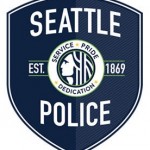 At the April North Precinct Advisory Counsel meeting, our Crime Prevention Coordinator, Mary Amberg, handed out this flyer on Home Security: Door Security:
At the April North Precinct Advisory Counsel meeting, our Crime Prevention Coordinator, Mary Amberg, handed out this flyer on Home Security: Door Security:
The most common way used to force entry through a door with a wooden jamb is to kick it open. When a door is kicked in, the frame usually splinters and gives way, allowing the burglar to enter. The weakest point is almost always the strike plate that holds the latch or lock bolt in place. The average door strike plate is secured only to the door frame molding. These lightweight moldings are often tacked on to the door frame and can be torn away with a firm kick. Increasingly, we’ve noticed a trend of burglars using pry tools at doors to gain entry into homes.
Suggestions Regarding Exterior Doors
– Check the condition of the wood frame. If worn, have a new frame made.
– Anchor the frame to the wall stud. Do this by removing the short screws used to
secure the strike plates and hinge plates. Replace them with 3”-4” wood screws.
This should be done to all exterior doors.
– Consider upgrading to a four-screw, heavy-duty, high security strike plate. They are
available at any hardware store or home improvement center. Install this heavy-duty
strike plate using 3”-4” wood screws to cut deep into the doorframe stud. Use these
longer screws in the knob lock strike plate as well and use at least one long screw in
each door hinge. This one step alone will deter or prevent most through-the-door
forced entries. Even without installing a heavy duty strike plate, using the longer 3”-4”
screws to secure your existing strike plates will vastly improve the security of your door.
– To combat pry tools being used against your doors, ensure you have 3-4” inch screws on the
strike plates, have a deadbolt lock on the door (see below), and install a latch guard on the door
that covers the area above and below where your door knob and deadbolt engage. A latch
guard costs about $12 at major hardware retailers.
– Finally, deadbolt locks should be installed on every exterior door, including doors that lead
from the garage to the interior of the home. A decent deadbolt lock will retail for about $30.
More substantial deadbolts can run upwards of $200.
Deadbolt Locks
There are two types of deadbolt locks: a single cylinder deadbolt, which has a thumb turn on the inside and is keyed on the outside, and a double cylinder deadbolt, which is keyed on both the inside and outside. Deadbolt “throws” (the part that actually goes in to the door jamb) should always be a minimum of 1” in length.
– Single Cylinder – Install on all solid doors where access to the locks and knobs cannot be gained by breaking adjacent glass
– Double Cylinder – Install on all doors where access to locks and knobs can be gained by breaking adjacent glass. Never leave the key in the lock. If you live in an apartment or condo, make sure you know the building code.
– Consider deadbolts with captive key locks on all doors located next to windows.
These locks have removable thumb latches so that even if a thief breaks a window, he still can’t reach around and unlock the door. But because deadbolts can also be a fire hazard, make sure they have a removable key on the inside cylinder for when you are home. When you leave, just remove the key and keep the lock bolted on both sides.
– Note: City of Seattle building codes do not permit Double Cylinder deadbolts to be
installed in apartment or condominium settings, nor does the code allow for “Captive Keylock”
deadbolts.










